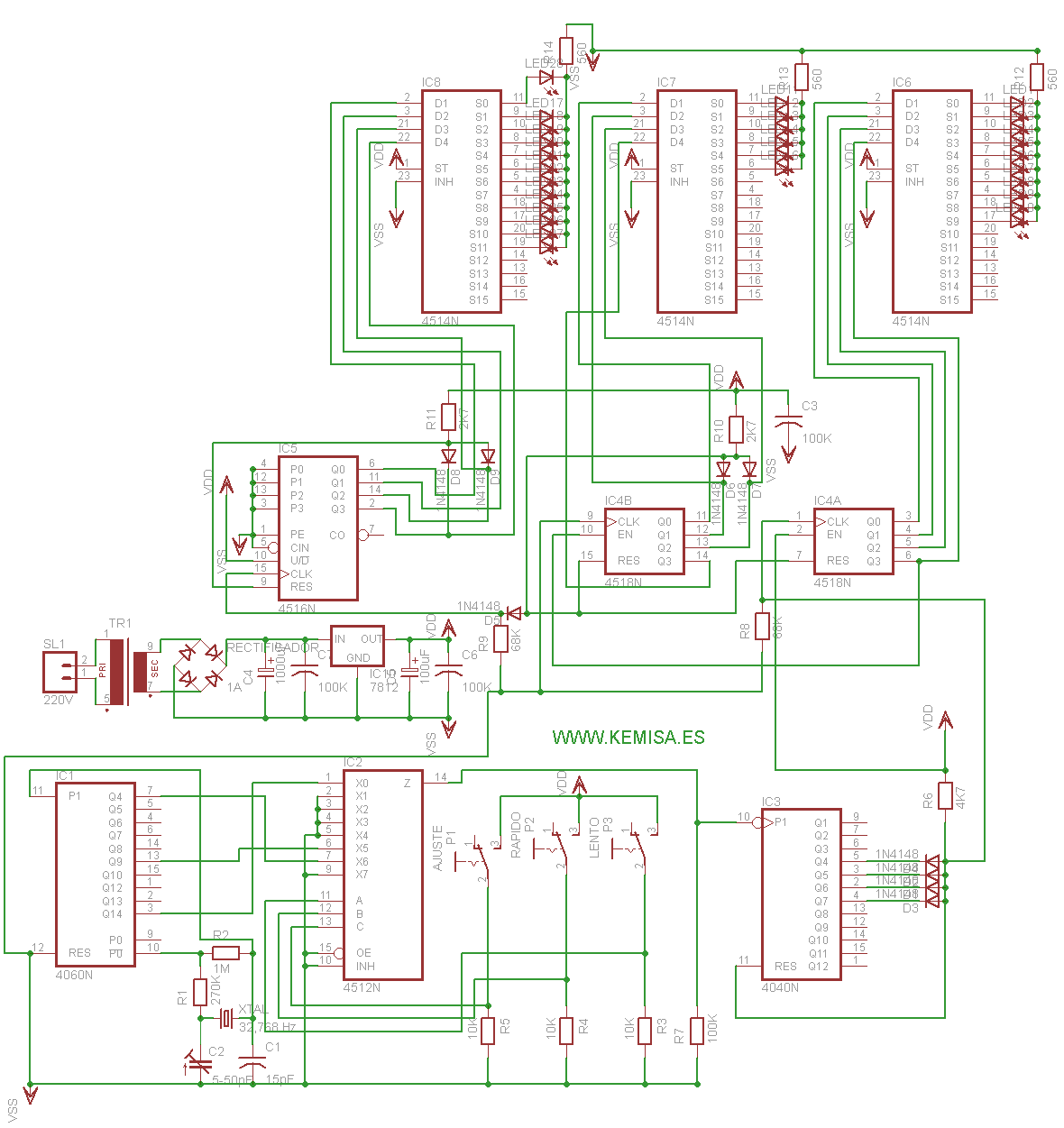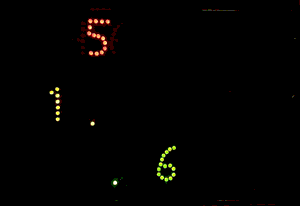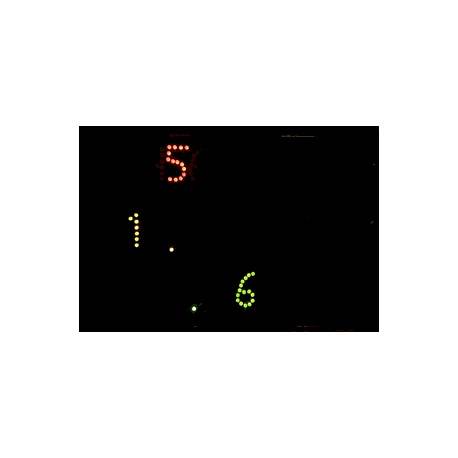Home circuits
Viewed products
-

Led clock circuit
This led clock circuit is quite...
Led clock circuit
This led clock circuit is quite complicated to assembly, because of the great quantity of connections it has, but the result is quite visible.
Data sheet
| Design | Schema |
| View | Led |
| Supply voltage | 12 Volts |
| Electronic | Digital |
| Photo | Yes |
More info
We made it years ago, and that is why, lamentably, there is no printed circuit board. The making of the clock is divided in the various stages which we shall now describe. The first of them consists of the integrated circuit IC1, a 4060, which is a 14 stage binary counter in charge of dividing the generating frequency by the crystal of 32, 768 Hz and generate the exit frequencies.
To be precise, at the tab 3, we place a 2 Hz signal, another 64 Hz at the tab 13, and the 2048 Hz signal at the tab 7.
This signal passes to the next integrated circuit, IC2, a data selector with eight entrances and one exit. During the normal function of the clock, through the exit IC2 (tab 14), the 2Hz signal is selected by default.
In the adjustment phase, using the switches P1 and P3, we could select a 64 Hz frequency for a slow set up of the clock, and using the switches P1 and P2 we select a 2048 Hz frequency for the fast set up.
The 2Hz signal follows its way from IC2 to IC3, a CD4040 integrated circuit. This integrated circuit is in charge of dividing the 2Hz frequency between 120, that is, it generates an impulse each minute.
This impulse is taken by a IC4-A, a 4158, which is a double counter. The first counter is in charge of counting the minutes and the second one (IC4-B) counts tenth parts of the minute. The integrated circuit IC5, a 4516 is in charge of counting the hours.
In the visualization, we have used the integrated circuit 4514, which are those that’ll visualize the counting made by IC4 and IC5. The mentioned counting will be shown in the LED diodes since one will be turned on each time.
There are many possibilities for the visualization of numbers; we opted to make the numbers with the LED diodes. See the photo.
Lastly, the power we used is of 12 volts. We have already included a power source in our scheme to plug it in directly in electric circuit.
The wiring driagram.

A photo of the clock assembled years ago. In this clock, we duplicated the integrated circuits IC4, IC6 and IC7, adding a second hand. You have to modify the counting of 4040 so that is counts impulses by second instead of doing it by minute; if you don’t know how to modify it, clic here.
The numbers are LED-s connected in a row. The value of the resistor depends on the number of LED-s and it makes all the LED-s light up the same way.
A photo of our clock with Leds.




